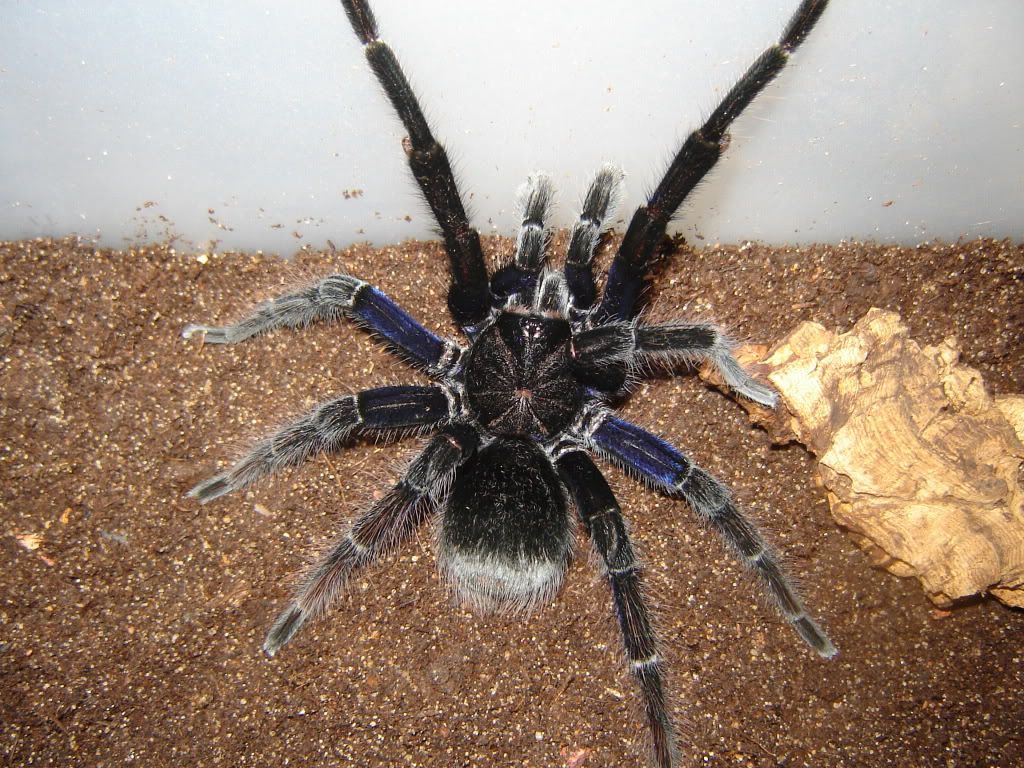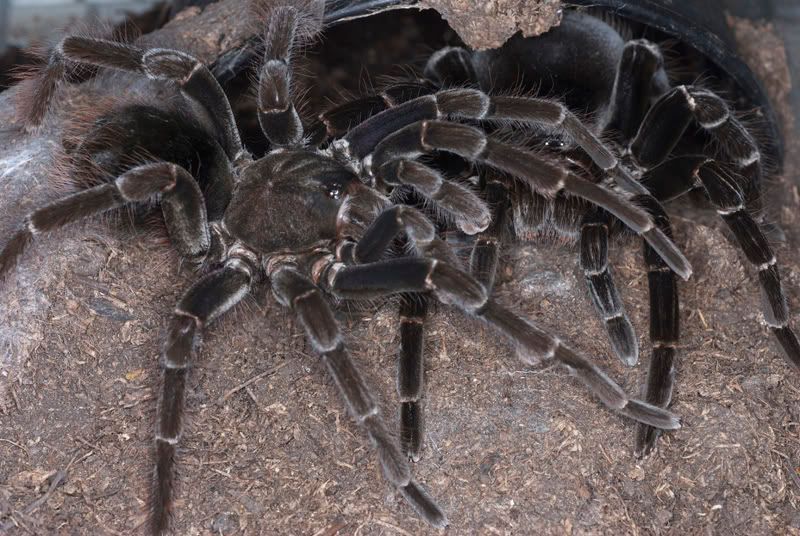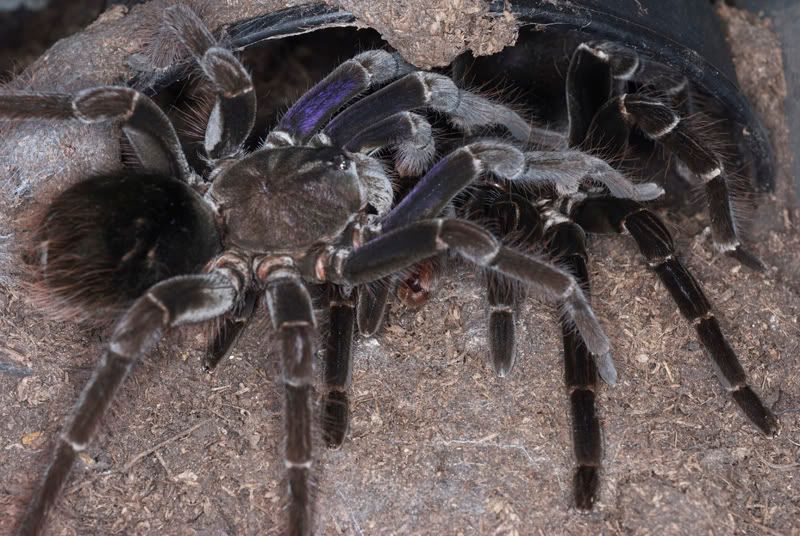- Joined
- Oct 23, 2007
- Messages
- 1,145
The female molted (confirmed female from molt), and found the male in the other tank.Or is the female that suspected male?
I will try and get pics tonight when I am done at work.
As for a different response I keep all my males in with the female(s) till they pass on from natural causes. My MM M.balfouri is still living with the female peacefully. So are all the MM Holothele incei, Heterothele villosella, Heterothele gabonensis, Ischnothele caudata, etc. Yes they act differently around the females, but I have not seen any munching except for old MM H.incei being grabbed by females that just produced/hatched their sacs. This usually happened after the male wouldn't leave the female alone.
I suspect that the MM CS will share the burrow with the female for a short time, like with Hysterocrates gigas pairs, before he begins his quest for another receptive female. We won't know for sure though till he molts again.





